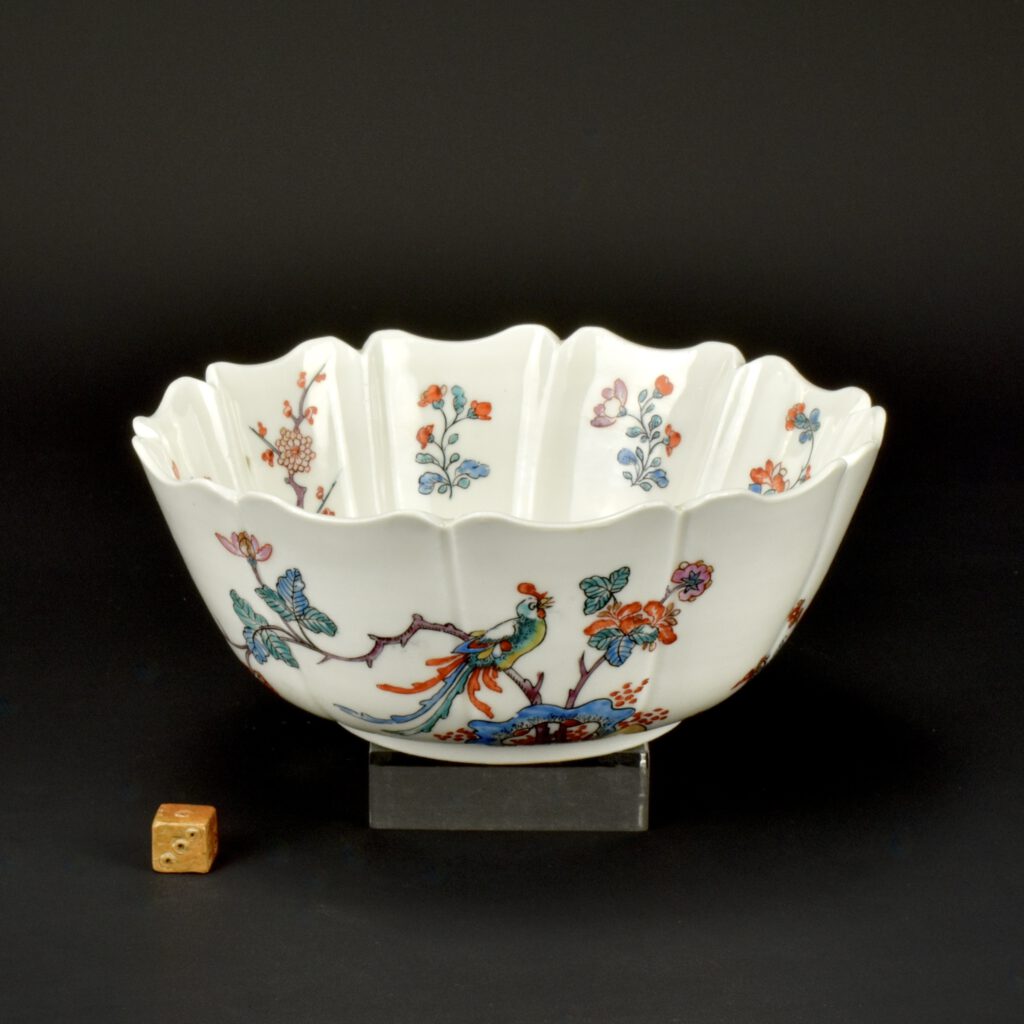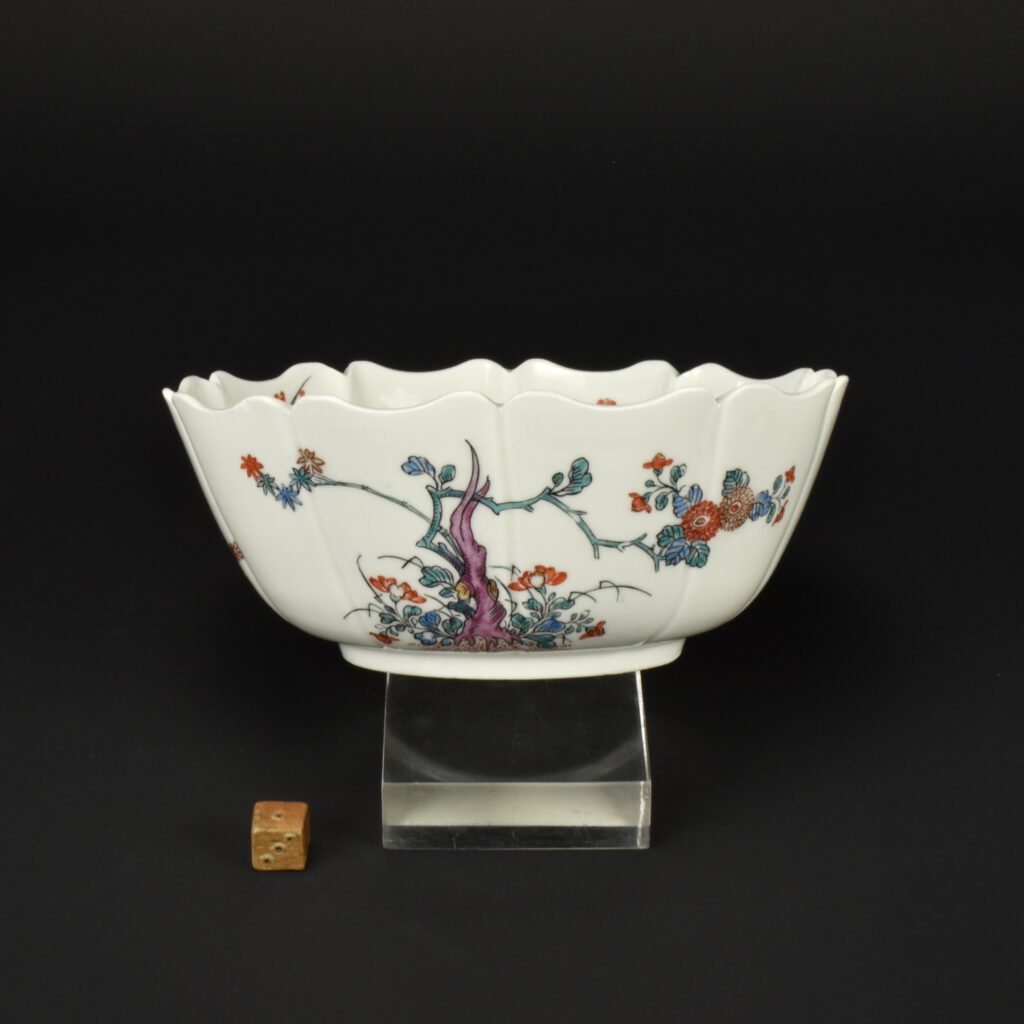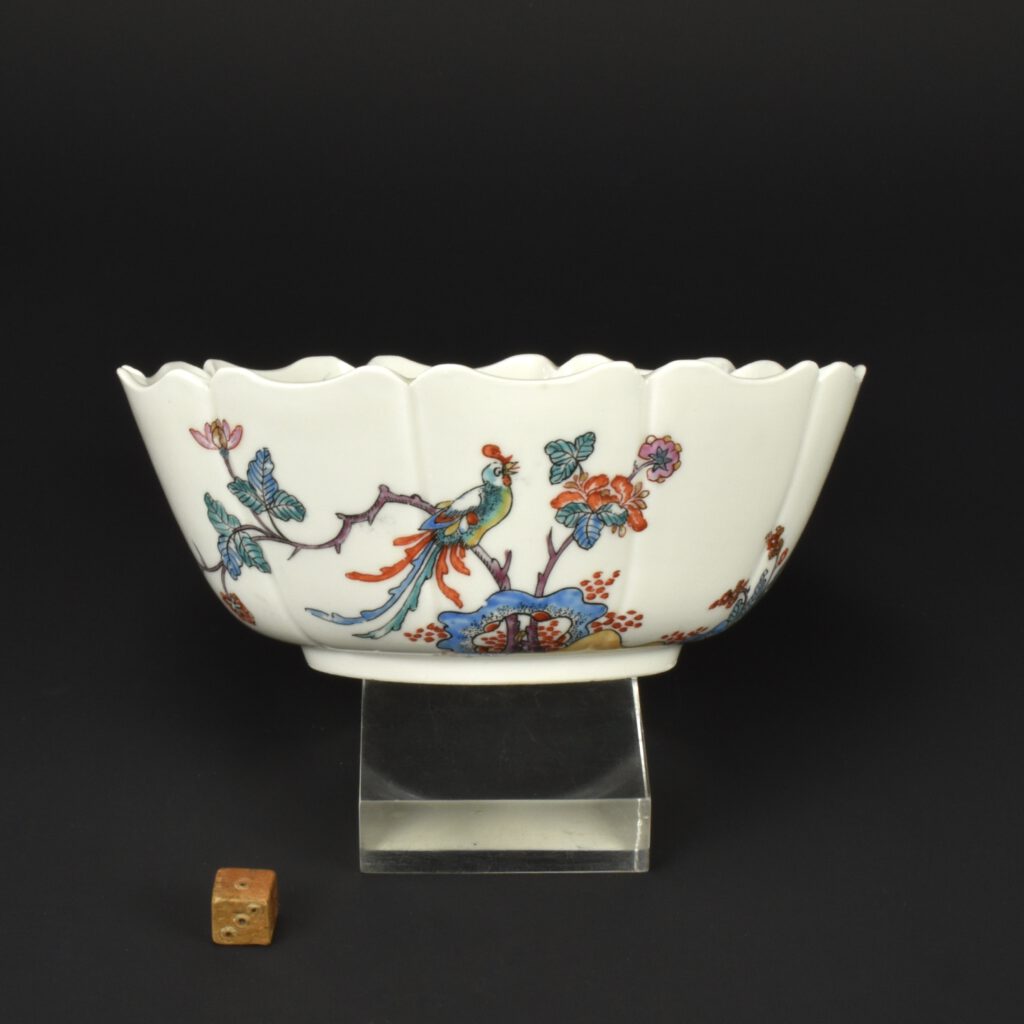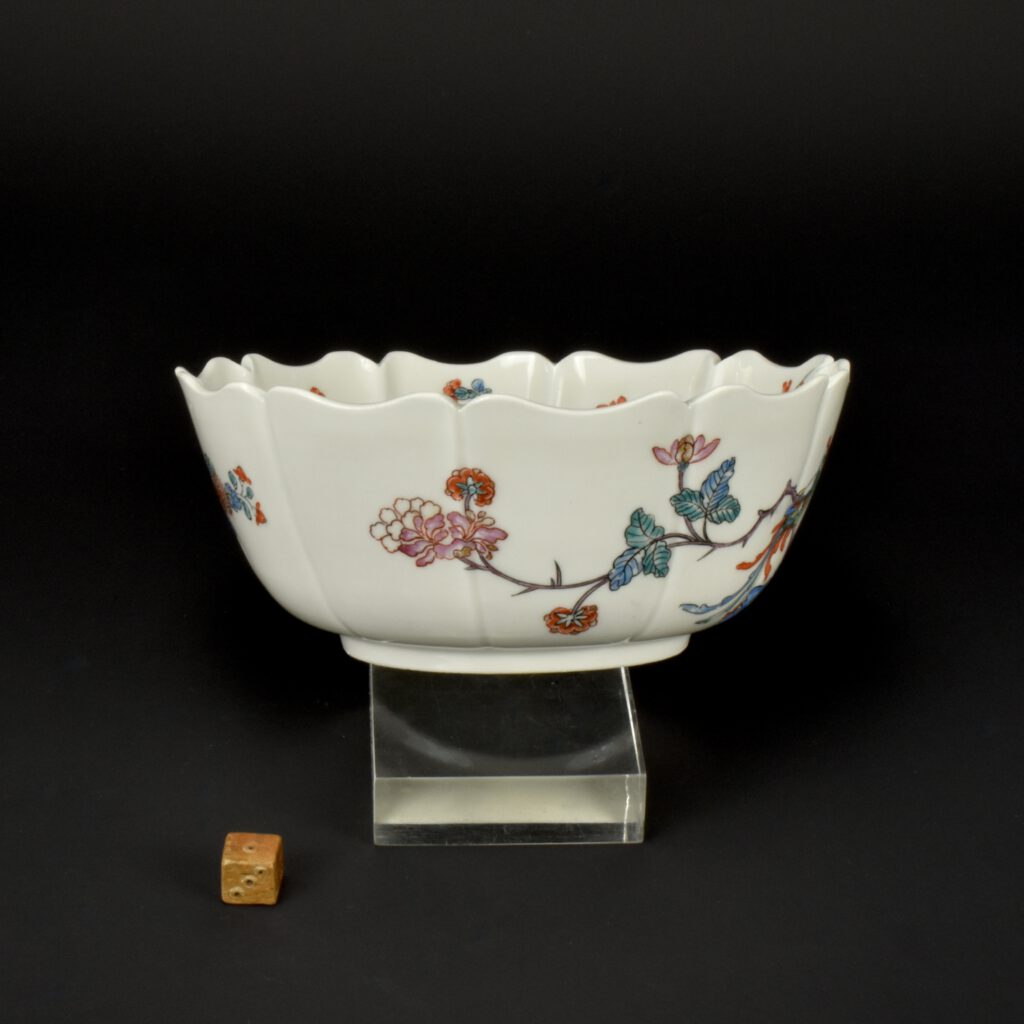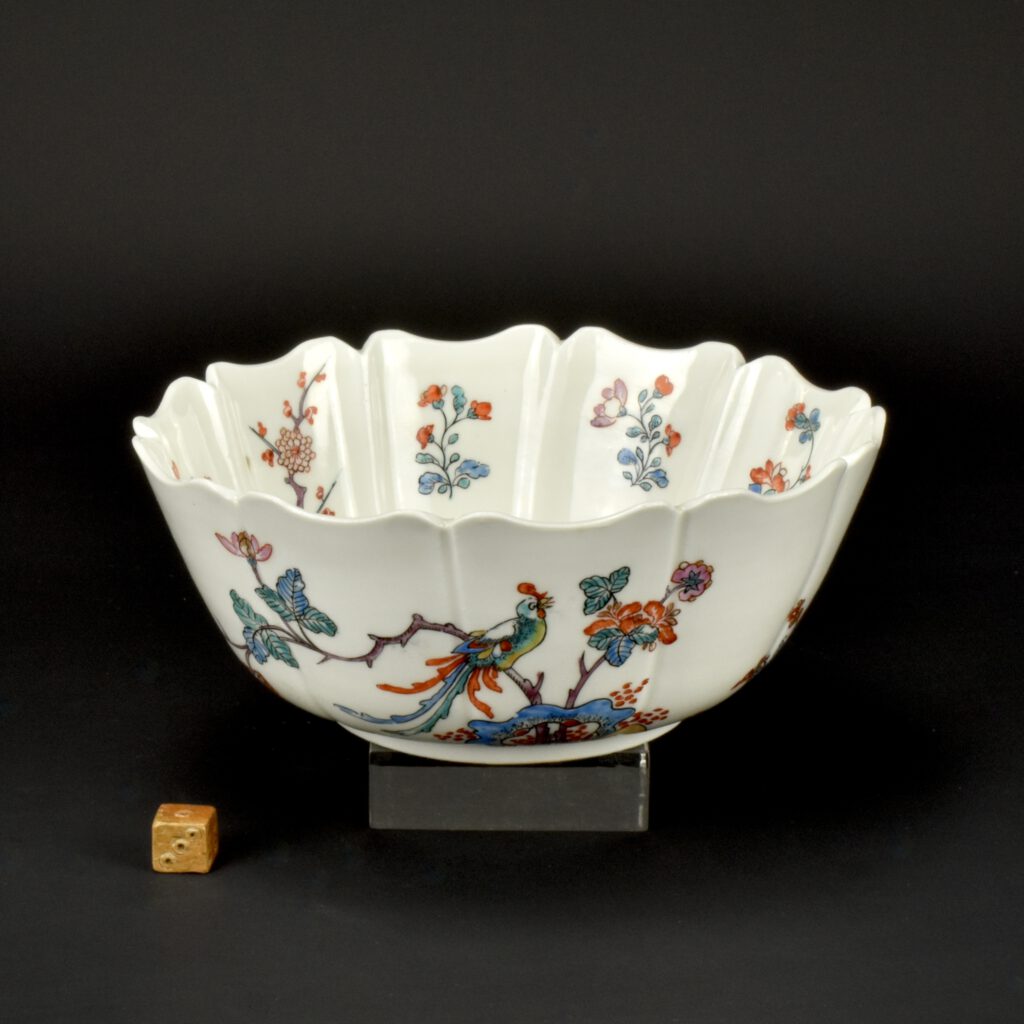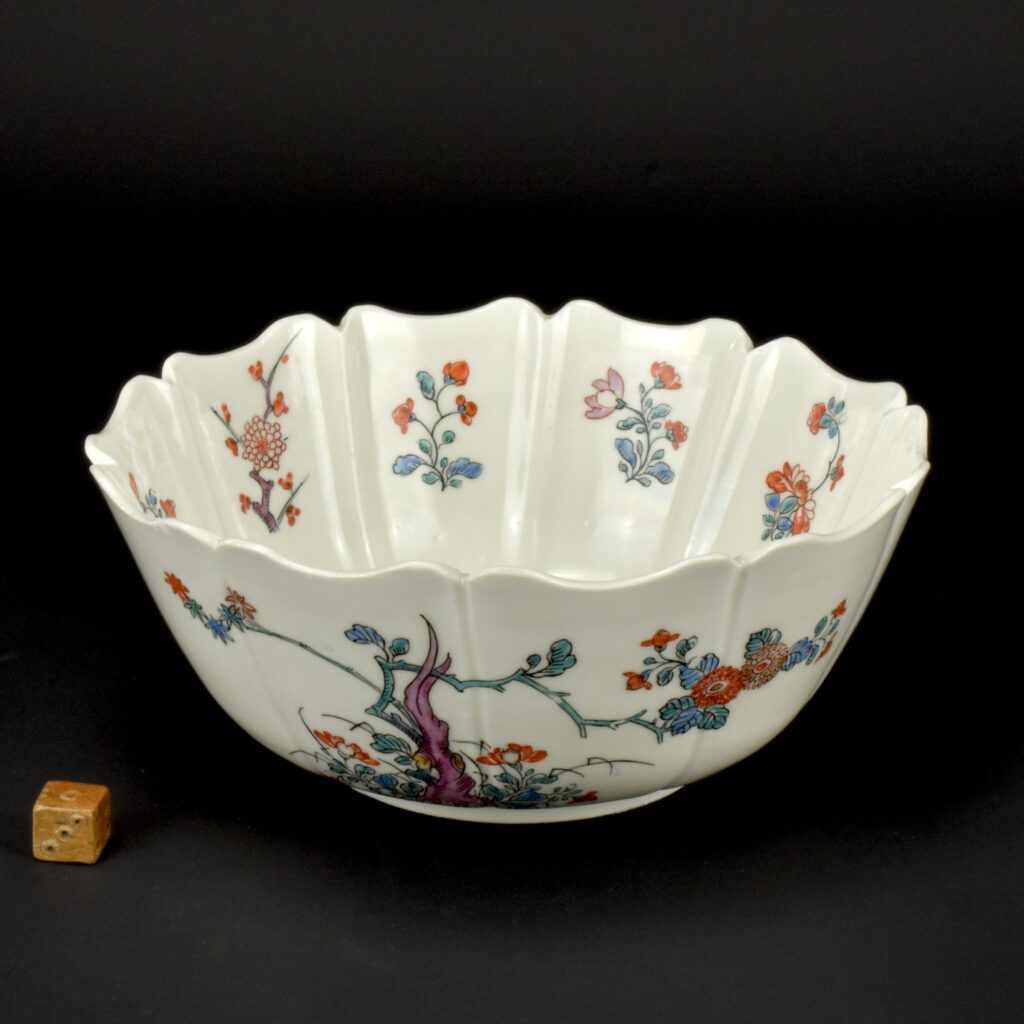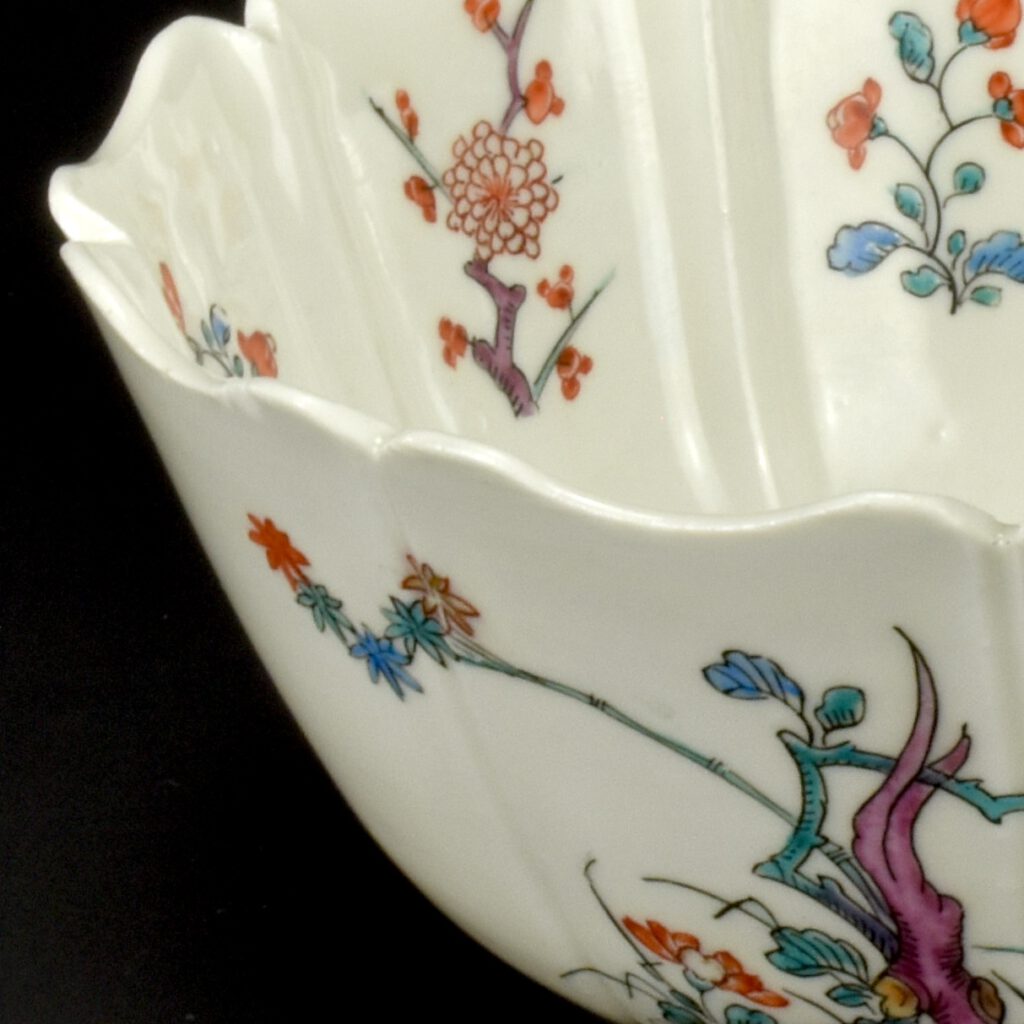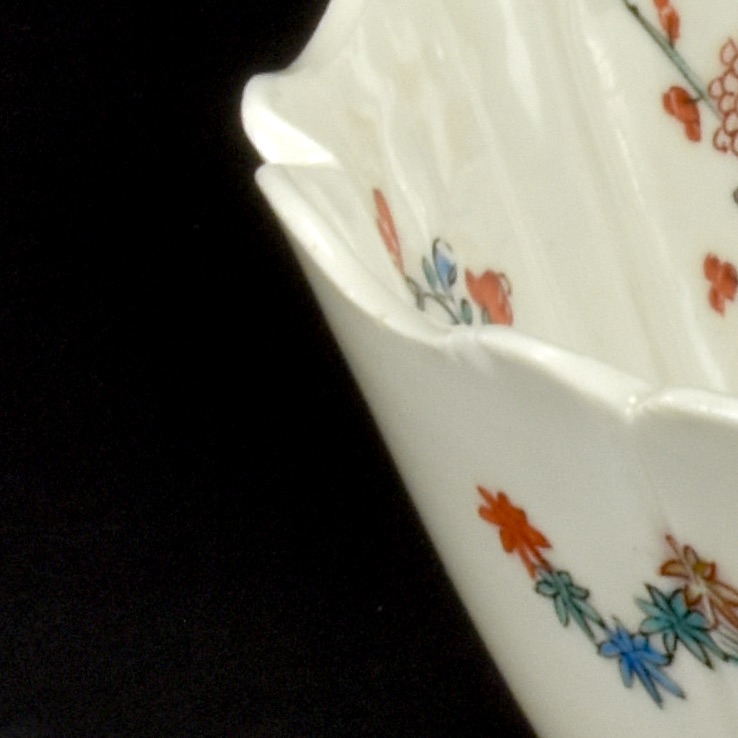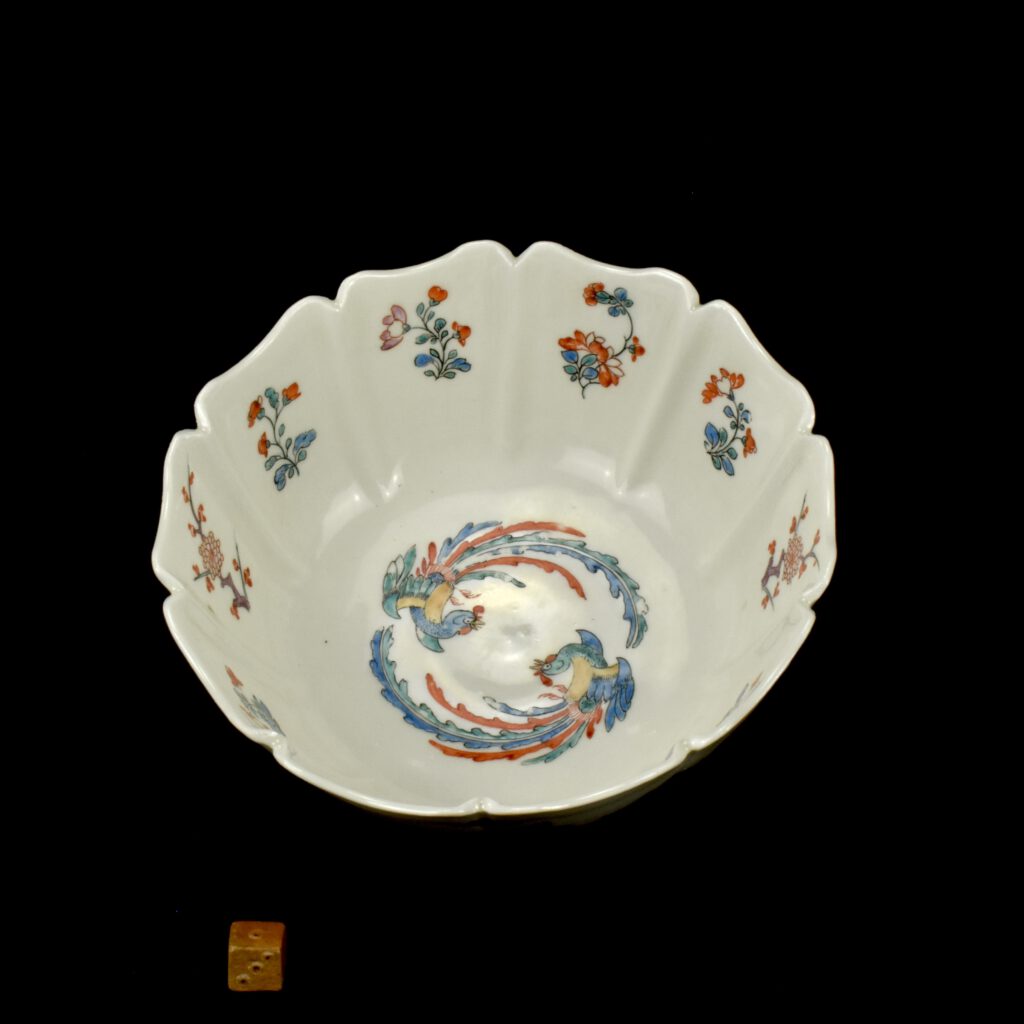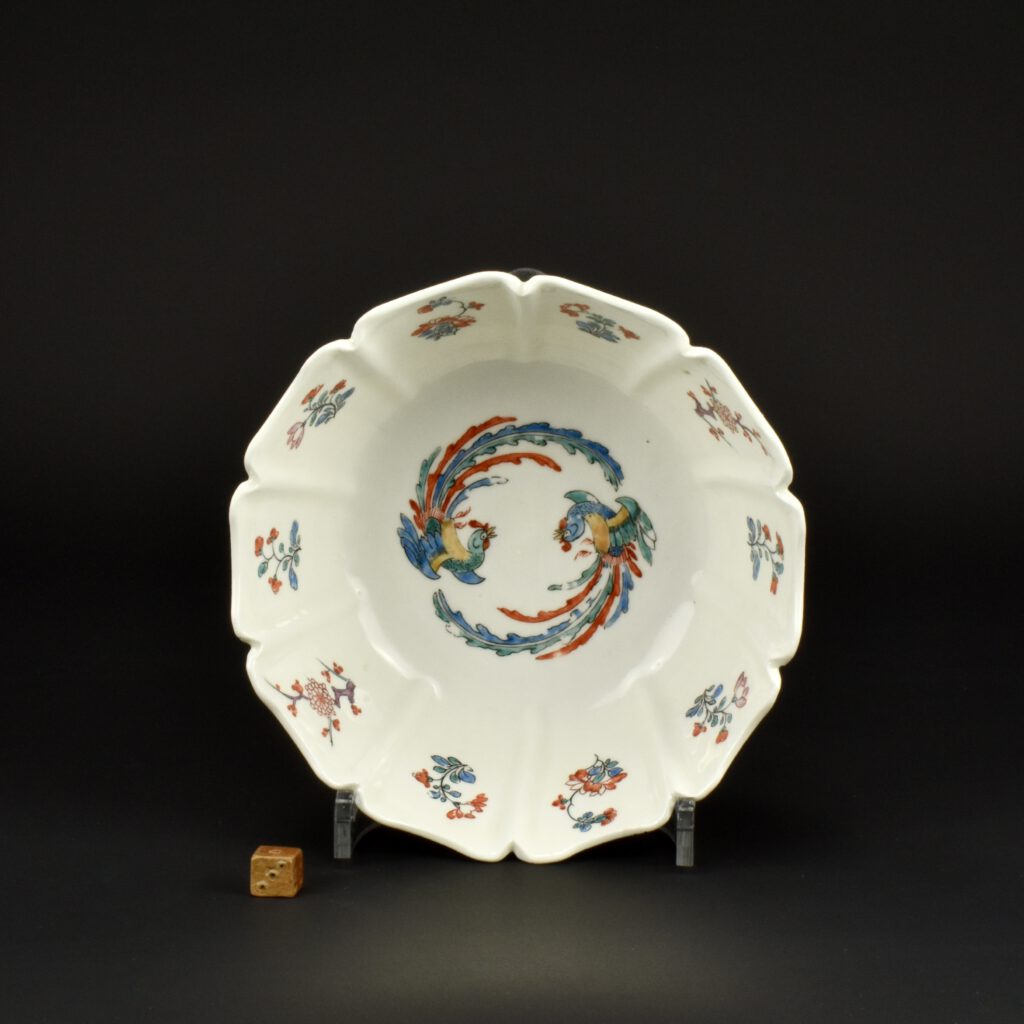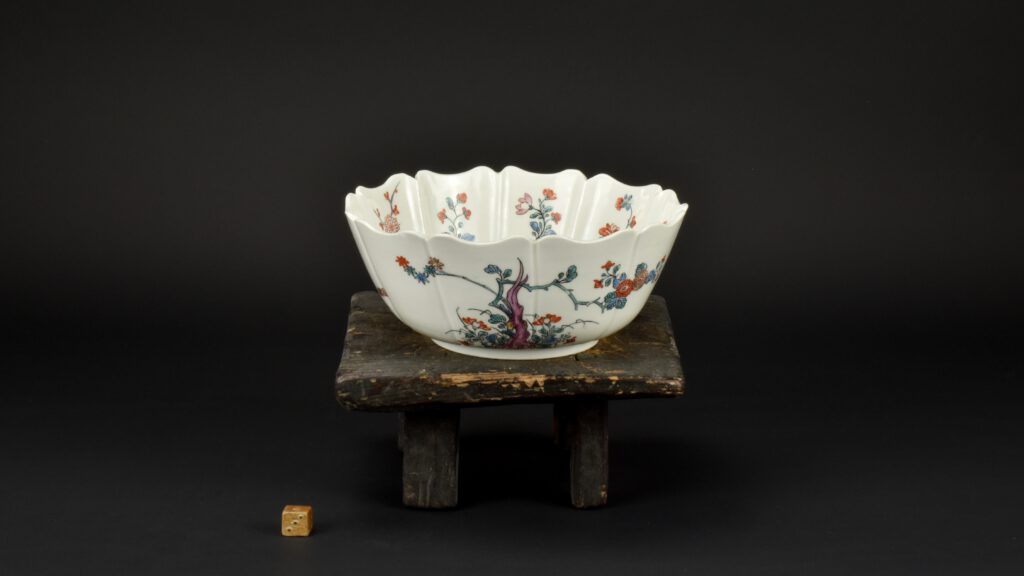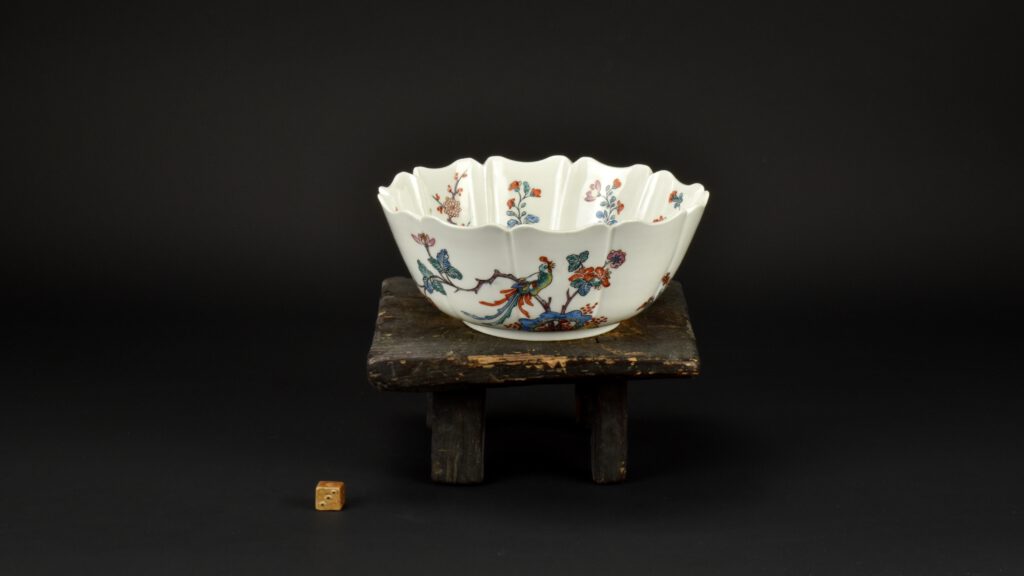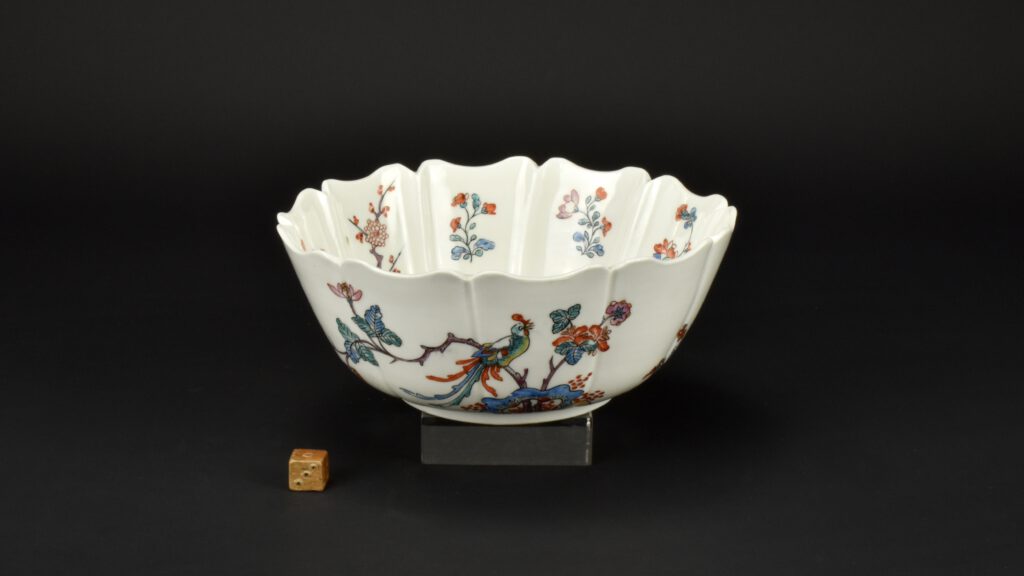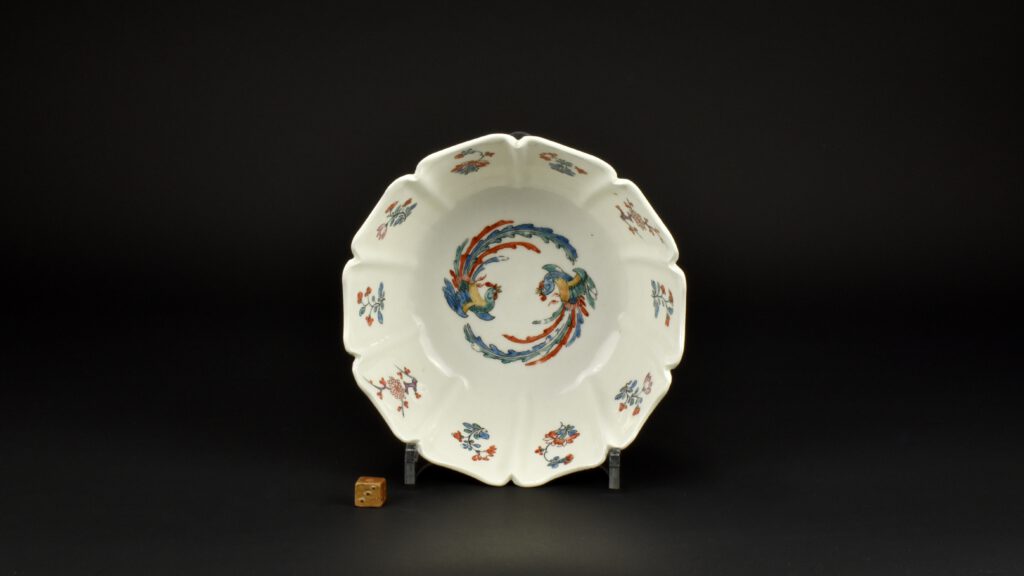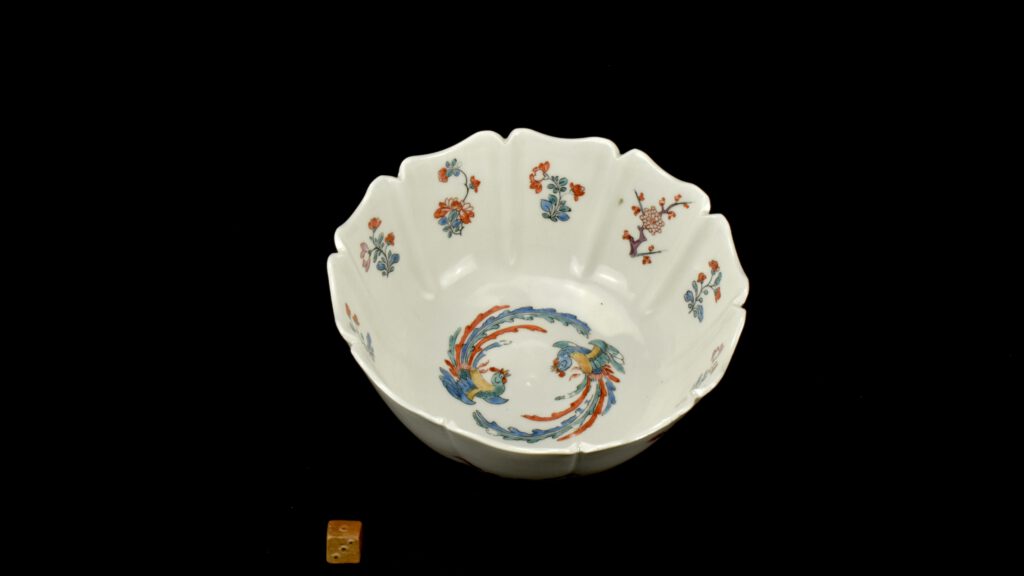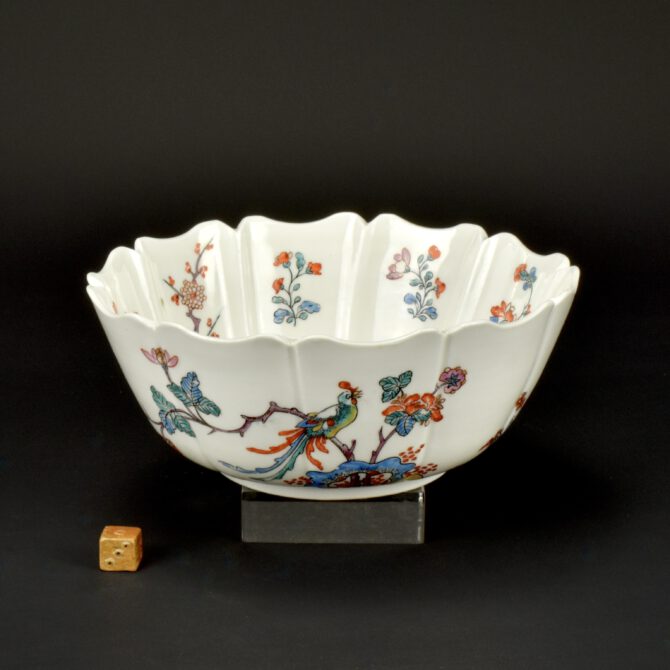
A Rare Meissen Böttger Porcelain Bowl with Dutch Kakiemon Decoration
A Rare Meissen Böttger Porcelain Bowl with Dutch Kakiemon Decoration, the porcelain dates to c.1715 – 1720, the Kakiemon style decoration was added in the Netherlands c.1720 -1730. This indented lobbed Meissen Böttger porcelain bowl is bowl was made without decoration. The shape is based on Japanese porcelain, the decoration is in the Japanese Kakiemon style, so the bowl would have been seen as being Japanese by many people at the time. The painting style is quite close to the Japanese original, however the enamels have pink puce colour that is more akin to Chinese Famille Rose enamel of the period. There is a matching bowl in the Gardiner Museum in Toronto, see below and References.
See Below For More Photographs and Information.
SOLD
- Condition
- A small flake chip to the outside rim, minor losses to enamels.
- Size
- Diameter 17.2 cm (6.8 inches). Depth 7.2 cm (2.86 inches).
- Provenance
- N/A
- Stock number
- 26055
- References
- A Meissen Böttger Porcelain Bowl with Dutch Kakiemon Decoration almost identical to the present example is in the Gardiner Museum, Toronto. It is Illustrated in Dragons, Tigers and Bamboo : Japanese Porcelain and Its Impact in Europe (Oliver Impey, Christiaan Jörg, Charles Mason, Greystone Books, Canada. 2012. ISBN 978-1553654346)
Information
The Gardiner Museum in Canada.
The Böttger porcelain bowl below matches the present example.
This bowl is illustrated in Dragons, Tigers and Bamboo : Japanese Porcelain and Its Impact in Europe by Oliver Impey, Christiaan Jörg, Charles Mason,
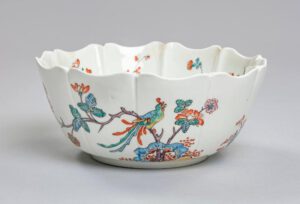
A Böttger or Early Meissen Dutch Decorated Teabowl and Saucer c.1715-1725.
Robert McPherson Antiques - Sold Archive - 23638.
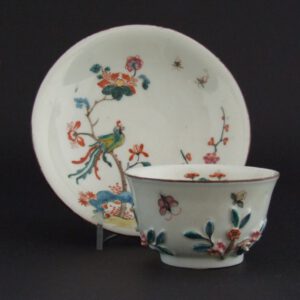
Condition
There are two areas of restoration to the back of the saucer, these are almost certainly coving chips. The tea bowl is in perfect condition.
Size
Diameter : 12.5 cm (5 inches).
Johann Friedrich Böttger 1682-1719
Böttger was a German alchemist. He was born in Schleiz, and died in Dresden. He was generally acknowledged as the inventor of European porcelain although more recent sources ascribe this to Ehrenfried Walther von Tschirnhaus. Böttger is still credited with developing the manufacture of porcelain in Europe.
Hō-ō Bird / Ho-Ho Bird :
The Japanese Hō-ō bird is type of auspicious phoenix and is similar to the Chinese Fenghuang. the Hō-ō appears only in peaceful and prosperous times (nesting, it is said, in paulownia trees), and hides itself when there is trouble. As the herald of a new age, the Hō-ō descends from heaven to earth to do good deeds, and then it returns to its celestial abode to await a new era. It is both a symbol of peace (when the bird appears) and a symbol of disharmony (when the bird disappears). The Hō-ō Bird appears frequently in Japanese porcelain of the late 17th and early 18th centuries, especially in Kakiemon wares. Ho-Ho is often used when referring to English porcelain versions of these Kakiemon designs.
Meissen Porcelain :
Meissen porcelain was the first hard-paste porcelain, or true porcelain to be developed in Europe. Development of this new hard-paste porcelain by Ehrenfried Walther von Tschirnhaus started in 1707. When Tschirnhaus suddenly died, the recipe apparently was handed over to Böttger, who within one week announced to the Elector that he could make porcelain. Böttger refined the formula and with some Dutch co-workers, experienced in firing and painting tiles, the stage was set for the manufacturing of porcelain. In 1709, the Elector established the first Meissen porcelain factory, placed Böttger`s laboratory at Albrechtsburg castle in Meissen and production started officially in 1710. In 1720 Johann Gregorius Höroldt became the director and introduced brilliant colours which made Meissen porcelain famous. The next sculptor, Johann Jakob Kirchner, was the first to make large-scale statues and figurines, especially of Baroque saints. His assistant was Johann Joachim Kaendler; in 1733 Kirchner resigned, and Kaendler took over as chief "modelmaster". He became the most famous of the Meissen sculptors. Under his direction Meissen produced the series of small figurines, often depicting scenes of gallantry, which brought out the best of the new material. His menagerie of large-scale animals, left in the white, are some of the high points of European porcelain manufacture. His work resulted in the production of exquisite figurines in the rococo style that influenced porcelain making in all of Europe. Supported by assistants like Johann Friedrich Eberlein and Peter Reinecke, he worked until his death in 1775. In 1756, during the Seven Years` War, Prussian troops occupied Meissen, giving Frederick II of Prussia the opportunity to relocate some of the artisans to establish the Königliche Porzellan Manufaktur Berlin. With the changing tastes of the neoclassical period and the rise of Sèvres porcelain in the 1760s, Meissen had to readjust its production, and in the reorganization from 1763, C.W.E. Dietrich of the Dresden Academy became artistic director and Michel-Victor Acier from France became the modelmaster. The practice of impressing numerals that correspond to moulds in the inventory books began in 1763. Sèvres styles and ventures into Neoclassicism, such as matte bisque wares that had the effect of white marble, marked the factory`s output under Count Camillo Marcolini, from 1774.
